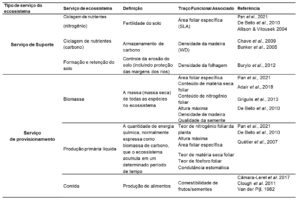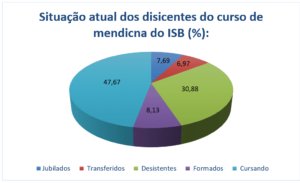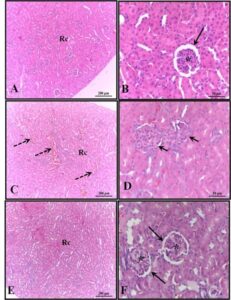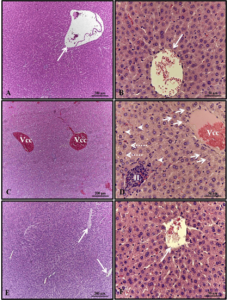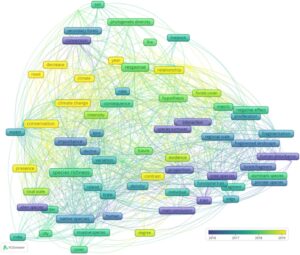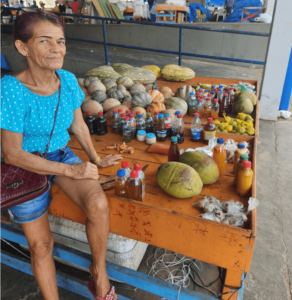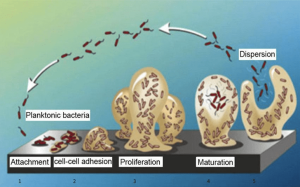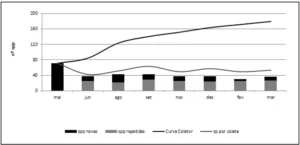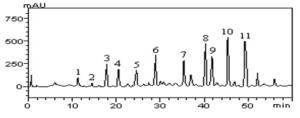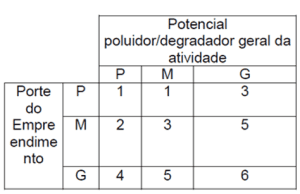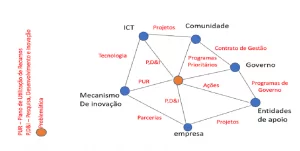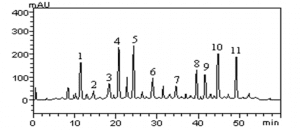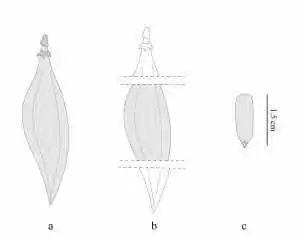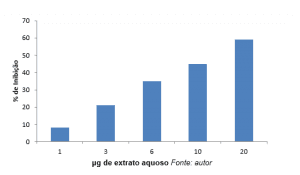MOURA, Allan Anderson Pereira [1], PINHEIRO, Felipe Ferreira [2], PINGARILHO, João Gonçalves [3], DIAS, Cláudio Alberto Gellis de Mattos [4], OLIVEIRA, Euzébio [5], DENDASCK, Carla Viana [6], ARAÚJO, Maria Helena Mendonça de [7], FECURY, Amanda Alves [8]
MOURA, Allan Anderson Pereira. Et al. Burnout syndrome in professionals from a basic health unit of macapá,-amapá, Brazil. Revista Científica Multidisciplinar Núcleo do Conhecimento. Year 03, Issue 09, Volume 04, pp. 05-21, September 2018. ISSN: 2448-0959
ABSTRACT
Burnout Syndrome (SB) is an important pathology in the Occupational Health (ST) area, marked by a psychosocial response inherent to chronic work stress. In the context of Primary Health Care (PHC), the integrality of care presupposes reciprocity between technical interventions and team interaction, requiring major transformations in basic care, involving negotiations between the senses and the values of the categories, institution and population. The conceptual and practical implications of this process, in situations where the limitations are punctually significant, can lead to central factors for the emergence of Burnout. This study aims to quantify the cases with characteristics of SB in health professionals of the Basic Health Unit (UBS) Policlínica of the Federal University of Amapá (UNIFAP) of Macapá-AP, Brazil. An epidemiological study was carried out using an instrument containing a sociodemographic questionnaire and the Maslach Burnout Inventory (MBI), used to identify the characteristics of this syndrome, in a UBS of Macapá; respecting ethical standards. As a result, it was observed that 74.60% (47/63) of the professionals working at the UBS evaluated participated in the study. The average age was 40.39 years, most nursing technicians, women, married, children without, natural of Macapá, non smokers, of public formation, did not participate of student financing during their professional formation, in bond with UBS, with an employment relationship and up to 5 years of service in APS. 70.21% (33/47) presented a high risk for Burnout; It was noted that it was higher among social workers, nursing auxiliaries, typists, nutritionists, pharmacy technicians and laboratory technicians, and lower among medical professionals. The number of SB cases was similar to those found in the international literature, but was slightly higher than expected in national studies. These results imply a process of sickness of APS professionals from Macapá / AP, suggesting the need to implement preventive policies directed to the conjuncture of these professionals
Keywords: Burnout syndrome; Basic health Unit; Macapá-Brazil
INTRODUCTION
Burnout Syndrome (SB) is an important pathology in the Occupational Health (ST) area, marked by a psychosocial response inherent to chronic work stress, due to poor adaptation of the individual to prolonged work, with negative repercussions both on the professional, family and social (FABICHAK, SILVA JUNIOR, MORRONE, 2014). It is a psychosocial pathology related to the occupational conjuncture, affecting mainly professionals who maintain their activities directly and emotionally with the public. It is the result of negative subjective experiences, affecting in a biopsychosocial way the affective, cognitive, physical, behavioral and motivational fields and the attitudes towards work, in the individual as well as in the family and social sphere (HOELZ, CAMPELLO, 2015).
It is characterized by workers who have suffered “professional exhaustion”, being related to the continuous exposure to emotional and interpersonal occupational stressors. Its clinic manifests itself classically in three main problems: Emotional Exhaustion (EE), which is manifested as a lack or lack of energy, enthusiasm and a feeling of resource depletion; Depersonalization (DE), which is characterized by treating clients, colleagues and the organization as objects; and reduced Realization (RE) at work, worker’s tendency to self-evaluate negatively (HYEDA, HANDAR, 2011).
To perform its diagnosis, multifactorial analysis is required using one or more of the four main theoretical conceptions based on its possible etiology: clinical, psychosocial, organizational, historical partner. Based on the psychosocial conception, the most used today, stress promotes the basis for the appearance of individual signs accompanied to the environment and work, which favors the appearance of the plural factors of the syndrome: Emotional Exhaustion (EE), Depersonalization ( DE) and Professional Realization (PR) (TRIGO, TENG, HALLAK, 2007).
It is possible to separate SB symptoms into four categories, or indicators. Emotional: use of mechanisms of emotional detachment, loneliness, alienation, anxiety, impotence or omnipotence; the attitudinal ones: negative attitudes, cynicism, apathy and hostility; behavioral changes: aggressiveness, isolation, abrupt changes in mood and irritability, and somatic: cardiovascular changes (palpitations, hypertension), respiratory (asthma attacks, dyspnoea), immunological (infections more frequently, allergies), sexual (decreased libido) (eg, migraine, insomnia), digestive (ulcers, nausea, diarrhea), muscular (low back pain, asthenia) (COSTA et al., 2009)..
There are also instruments that have been used in order to obtain a simplified diagnosis of SB. In Brazil, the Maslach Burnout Inventory (MBI) stands out, a worldwide questionnaire for the evaluation of SB in terms of the three dimensions that, according to the psychosocial perspective, make up the syndrome. This questionnaire consists of 22 items, where the evaluated subject responds to items with a frequency of 06 degrees, that is, in front of each of the items, the degree of intensity or frequency is indicated, ranging from (7) totally in agreement to (1) totally at odds (FRANÇA et al., 2014).
The number of studies in the academic world that use a validated questionnaire to evaluate the prevalence of Burnout Syndrome (SB) in Primary Health Care (PHC) health professionals (FRANÇA, 2010) is still low. However, it is known that the peculiarities in the personality of each individual can facilitate or make difficult to adapt to the demands of the tasks, as well as the perception of the stress to be associated, as well as the effective diagnosis and treatment of the disease. In addition, the vulnerability of these professionals in situations of stress focuses on the inefficient personal protection, since they permanently deny their personal fragilities and external risks, in the demand of the sublime (COSTA et al., 2009).
The professionals of the Basic Health Unit (UBS) usually have an extensive workload, with theoretical and practical activities, in various scenarios of action, as well as stress related to the working environment itself, such as potential risks to the health of the worker, work overload, unhealthy working environment, introduction of new technologies, nature and content of work (LOPES & PÊGO, PÊGO, 2016). Such excess of activities often does not allow these professionals to have time to take care of their health, to relate with family and friends or to develop other interests; and to improve the quality of life, as well as greater risks for SB and other mental illnesses (TORRES et al., 2011).
With regard to the prevention of work-related mental disorders and behavior, it is necessary to rely on procedures for monitoring health problems and working environments and conditions. For this, medical-clinical, epidemiological, occupational hygiene, toxicology, ergonomics, psychology, and other sciences knowledge are used, valuing workers’ perceptions about their work and their health (BRASIL, 2001). Regarding Burnout Syndrome (SB), an important disease grouped within the set of mental disorders and work-related behavior, the most effective prevention is based on the promotion of physical, emotional, psychological and spiritual well-being throughout of the professional career (COSTA et al., 2009).
Some systematized strategies are employed in this sense, both personally and organizationally, and that the health professional must take action to prevent Burnout (FRANÇA et al., 2014). By grouping strategies and listing in each one what measures should be undertaken, they have to be; at the organizational level, it is necessary to find meaning in the work; setting limits; improve the level of interaction and communication between peers; to improve the professional-patient relationship by involving him in improving his health status and adapting himself flexibly to the needs of the patient, with less reporting due to poor clinical practice, and adequate administrative support systems that reduce the number of bureaucratic tasks to perform (COSTA et al., 2009).
It is fundamental for the individual to learn to manage his / her own time between personal and professional activities, to distinguish between work and leisure, to participate in leisure activities unrelated to the profession, while seeking his / her professional pleasures to counteract the inevitable difficulties FERRARI, 2014). The professional needs time for himself, a period of relaxation, after a day’s work, even if this period is of short duration, during which he can rest or enjoy his own sanity (COSTA et al., 2009).
In relation to drugs commonly used in the treatment of SB, the association between antidepressants and anxiolytics is usually made. The most commonly used drugs, antidepressants, tend to decrease the manifestations of inferiority and disability, which are some of the main symptoms expressed by patients with the syndrome (FRAZÃO, 2014).
In addition, it is necessary to follow up with a psychotherapist, since it helps the patient to overcome the crises, through guidelines, potentializing the effects of the use of medications through the re-signification and the resumption of the senses of the subject’s life history. Thus some good strategies are psychotherapies in groups, with classes of dance and theater, providing: exchange of experiences, self-knowledge, greater security and social interaction. Other important points include medical follow-up and change of habits. Important dimensions such as regular physical activity and relaxation exercises should be part of the patient’s routine as they help control the symptoms (FRAZÃO, 2014).
The prevalence of Burnout syndrome (professional exhaustion) ranged from 25% to 70% among Brazilian health professionals in Primary Health Care (TOMASI et al., 2008). Another study on the worldwide prevalence of Burnout in primary health care professionals, carried out in 2013 with a review of 18 articles, found prevalence in Primary Health Care (PHC) ranging from 34.8% to 85.7%. When analyzing the clinical dimensions of the syndrome most affected, the prevalence ranges from 19 to 55.5% for High Emotional Exhaustion (EE), from 15.7 to 54% for high Depersonalization (SD) and from 16 to 45.1 % for Low Professional Achievement (PR) (MORELLI, SAPEDE, DA SILVA, 2015).
AIM
To quantify the cases with characteristics of Burnout Syndrome in health professionals of the Basic Unit of Polyclinical Health of the Federal University of Amapá, Macapá-AP- Brazil. To characterize the socio-demographic profile of the health professionals of UBS Policlínica of UNIFAP of Macapá and to identify the characteristics of SB more frequent in professionals.
METHODS
An epidemiological study of the analytical type was carried out, quantifying the characteristics of SB in Primary Health Care (PHC) professionals from a Basic Health Unit (UBS) in the city of Macapá, State of Amapá, Brazil, in the period of 2018. The study was carried out at the UBS Polyclinic of the Federal University of Amapá (UNIFAP), located at Rua Amadeu Gama, 1385 – Zerão, Macapá – AP, Brazil. The unit is public and accredited to the Unified Health System (UHS).
The sample of the present study was composed by 63 health professionals working in the Basic Health Unit (UBS) Policlínica of the Federal University of Amapá (UNIFAP) of Macapá-AP in the period of 2018; These are doctors, dentists, oral hygiene technicians, pharmacists, pharmacy technicians, nutritionists, nurses, nursing technicians, nursing assistants, health assistants, community health agents (ACS), laboratory technicians, and social workers (Approved by the Committee of Ethics in Research with Humans (CERH) – CAAE: 68583917.4.0000.0003). The information was collected through the filling of two questionnaires: a sociodemographic questionnaire; and another for the detection of Burnout Syndrome (SB), the Maslach Burnout Inventory (MBI), HSS (Human Services Survey), translated into Brazilian Portuguese.
RESULTS
Among all the participants of this research; 70.21% (33/47) presented a high risk for Burnout Syndrome (SB), 19.14% (09/47) presented moderate risk and 10.65% (5/47) presented no risk. There was a high risk of Burnout in 100% of social work professionals (01/01), typing (01/01), nutrition (01/01), technician in pharmacy (01/01) and technician in laboratory (02/02); in 87.50% of nurses (07/08); 66.67% of pharmacists (02/03); 52.94% of nursing technicians (09/17); 50.00% of oral hygiene technicians (01/02) and 40.00% of doctors (02/05); according to graph 1.
Graph 01: Distribution of the Number of Participating Professionals per Professional Area within the risk classification (high, moderate and low) for Burnout Syndrome.
When analyzing the data on the socio-demographic variables of the participants and correlating them with the high risk for Burnout Syndrome (SB), it was possible to observe in the “gender / gender” category that 68.08% (32/47) females and 31.92% (15/47) males. Furthermore, it was found that 80% (12/15) of the male participants and 65.62% (21/32) of the female participants are at high risk for SB, according to graph 2.
Graph 2: Quantitative Health Professionals of the UBS distributed by Sex / Gender in relation to the risk classification (High) for Burnout Syndrome.
Age was grouped for analysis by age group, with variation between 23 and 64 years, with a mean of 40.39. The proportion of participants between the ages of 23 to 30, 31 to 40, 41 to 50, 51 to 60 and 61 to 64 years was respectively demonstrated: 29.79% (14/47); 19.15% (09/47); 27.66% (13/47); 17.02% (08/47) and 06.38% (03/47). The following relationships between the high risk for SB with the age groups were observed: between 23 and 30 years old, with 85.71% (12/14); between 31 and 40 years old with 55.56% (5/9); between 41 and 50 years old with 69.23% (9/13); between 51 and 60 years old with 62.50% (5/8) and between 61 and 64 years old with 66.67% (2/3), according to graph 3.
Graph 3: Quantitative of Health Professionals of the UBS distributed by age group in relation to the risk classification (High) for Burnout Syndrome.
Regarding the “Marital Status” of the total number of participants; 29.79% (14/47) are Singles, 14.89% (07/47) live in Stable Union, Are Married 44.68% (21/47), 02.13% (01/47) are Judicially Separated, 08.51% (04/47) are Divorced and none were Widowed. It has been found that they live at high risk for 100% (1/1) burnout of participants who are Judicially Separated; 76.19% (16/21) of the participants Married; 71.43% (10/14) of the Singles; 57.14% (04/07) of the participants living in Stable Union; and 50% (02/04) of the participants who are Divorced, according to graph 4.
Graph 4: Quantitative of Health Professionals of the UBS distributed by Civil Status in relation to the risk classification (High) for Burnout Syndrome
It was found in relation to the category “children” that among the professionals analyzed, 23.40% (11/47) did not have children; 19.15% (09/47) have a son, 19.15% (09/47) have two children, 19.15% (09/47) have three children; and 19.15% (09/47) have four or more children. Participants who have a child proportionally have slightly more Burnout than the others, since 88.88% (08/09) of these individuals are at high risk for Burnout. 77.77% (07/09) of those who have two children; 77.77% (07/09) of those with three children and 44.44% (04/09) of those with four or more children are at high risk for burnout. As for the others; 81.81% (09/11) of those who do not have children at high risk for Burnout, according to graph 5.
Graph 5: Quantitative Health Professionals of the UBS distributed by Number of Children regarding the risk classification (High) for Burnout Syndrome
As for “Naturality” (birthplace); 42.55% (20/47) of the participants are from Macapá / PA, 21.27% (10/47) are from Belém / PA, 12.76% (6/47) are from Afuá / PA, 10.63% (05/47) are natural of Santana / AP, 04.25% (02/47) are natural of Mazagão / AP, 02.12% (01/47) are natural of Amapá / AP, 02, 12% (01/47) are natural of Baião / PA, 02,12% (01/47) are natural of Fortaleza / CE, and 02.12% (01/47) are natural of Gurupá / PA. In this regard, it was verified that 100.00% of the natural participants of Santana (05/05), Baião (01/01) and Mazagão (02/02) are in high risk for Burnout. 80.00% (08/10) of the natural participants of Belém, 75.00% (15/20) of the natives of Macapá, 16.66% (01/06) of the natives of Afuá, 16.66% 06) of the Gurupá natives, 00.00% (00/01) of the natives of Amapá and 00.00% (00/01) of the natives of Fortaleza have a high risk for Burnout, according to graph 6.
Graph 6: Quantitative of Health Professionals of the UBS distributed by Naturality (birthplace) in relation to the risk classification (High) for Burnout Syndrome
In this study; 93.61% (44/47) did not smoke and 06.38% (03/47) smoked. There are also 100.00% (03/03) of self reported as “smokers” and 72.72% (32/44) of those who are not smokers are at high risk for Burnout, according to graph 7
Graph 7: Quantitative of UBS Health Professionals distributed by Smoking in relation to the risk classification (High) for Burnout Syndrome
Participants who obtained public “training” accounted for 57.44% (27/47) and obtained private training, 42.55% (20/47). 75.00% (15/20) participants had a higher rate of high risk for burnout, while those who obtained public training had 66.66% (18/27) of high risk for Burnout, according to graph 8
Graph 8: Quantitative of UBS Health Professionals distributed by Training (Public / Private) regarding the risk classification (High) for Burnout Syndrome
Regarding the “Financing for training” aspect, 97.87% (46/47) did not use student financing programs, while 2.13% (01/47) used it. It was found that 71.73% (33/46) of those who did not use “financing for training” presented a high risk for burnout, while none of those who used financing presented this risk, according to graph 9.
Graph 9: Quantitative of UBS Health Professionals distributed according to Student Financing in relation to the risk classification (High) for Burnout Syndrome
Regarding the employment relationship of the study professionals; 74.46% (35/47) have a “contract with UBS”, 25.53% (12/47) participate in the Family Health Team (ESF) program. In the variable “contract with UBS”, it was also observed those employees who provided services in this unit through public tender and the like, covering all professionals except those who participate in the ESF. They are at high risk for Burnout; 80.00% (28/35) of those that are linked via “contract with UBS” and 41.66% (05/12) of the “ESF” route, according to graph 10.
Graph 10: Quantitative of UBS Health Professionals distributed by Type of Employment Bond in relation to the risk classification (High) for Burnout Syndrome
Relating to “number of links”; 55.31% (26/47) have a link, 31.91% (15/47) have two links, 12.76% (06/47) have three links none have four or more links. It was observed that 69.23% (18/26) of those with a link; 73.33% (11/15) of those with two links and 66.66% (04/06) of those with three links have a high risk for Burnout, according to graph 11.
Graph 11: Quantitative of Health Professionals of the UBS distributed by the Number of Employment Links in relation to the risk classification (High) for Burnout Syndrome
As for the “time of service”; 53.19% (25/47) have up to 05 years of work in Primary Health Care (PHC); 17.02% (08/47) have between 05 and 10 years of work in the APS and 29.78% (14/47) have more than 10 years. 68.00% (17/25) of those who have been working for less than 5 years; 75.00% (06/08) of those who act between 05 and 10 years in the APS and 71.42% (10/14) of those who work for more than 10 years have a high risk of Burnout, according to grapht 12.
Graph 12: Quantitative of Health Professionals of the UBS distributed by the Time of Service in the APS regarding the risk classification (High) for Burnout Syndrome
DISCUSSION
Proportionally more vulnerable and at high risk for SB are: social worker, nursing assistant, typist, nutritionist, pharmacy technician and laboratory technician; with 100% of those at high risk for SB., according to Chart 01. On the other hand, medical professionals were the least prone to this risk, with 40% (02/05). A review of the literature compared 27 articles published between 2011 and 2015 on Burnout Syndrome in health professionals. In this, it is evaluated that the observation of high risk for this syndrome among the various categories, in all regions of the country, at various levels of health care, both in the public and private sectors, indicates that this is not a problem located or exclusive to a particular sector or profession (FAGUNDES, 2016).
However, the literature clarifies that SB is a present and important health problem, which present in common: self-care, care and attention to the public (FAGUNDES, 2016). Corresponding results were found in this study, where 70.21% (33/47) of the participants presented a high risk for Burnout Syndrome (SB) and 19.14% (09/47) presented moderate risk.
There is a predominance of women in the quantitative number of medical professionals, nurses, technicians and nursing assistants who provide health care in the polyclinic UBS of UNIFAP, representing 80.85% (38/47) of the total number of participants, according to Chart 02. Historically, there is a greater predominance of the female sex in these labor classes, especially in the areas that focus on care activities, such as nursing professionals and nursing technicians, which constitute eminently female labor forces (FRANÇA, 2010).
However, in the present study the highest frequency of Burnout Syndrome (SB) characteristics was in males, estimated at 80% (12/15). There is no unanimity in the literature regarding the relation of SB with the variable “sex / gender”, with some studies observing a higher risk in men, others in women, and some that do not find relation between this variable and SB (MORELLI, 2015).
It was found that professionals under the age of 30 years present a higher risk for Burnout, with 85.71% (12/14), according to Chart 03. This data is similar to a study to evaluate SB in professionals of the Family Health Team (ESF) performed in the city of Rio Grande do Sul, which showed the variable age with a statistically significant association (p = 0.034) with the dimensions of the Burnout Inventory (MBI-HSS); associating this result with insecurity, the clash with reality and the low professional achievement (DE LIMA TRINDADE, 2017).
SB can manifest itself in the first year of the professional’s work, and that professional inexperience would be the root cause of this process (Barros et al., 2017). Corroborated by a study of physicians in the family of European countries, the age group younger than 45 years is more associated with the prevalence of SB, since they have less capacity to deal with stress (SOLER, 2008).
When the participants “Judicially separated”, “Singles” and “Divorced” (Graph 04), who bear in common the fact that they are not necessarily living with another person, it is verified that 68.42% (13/19 ) are at high risk for Burnout Syndrome, compared to 71.42% (20/28) of those who declared themselves to be “Married” or “Stable Union”, thus revealing that living with another person may be related to a higher risk of developing SB. A similar finding is found in the literature, in which the “Married” or “Stable Union” individuals presented lower professional achievement, demonstrated a higher risk for SB (LIMA et al., 2007).
When the presence of children is evaluated (figure 05), the results are according to the literature, that is, having children seems to be a protective factor against professional exhaustion. The presence of “one child” was shown to be the most risk related variable for SB, while the variable “four or more children” was shown to be less related. The presence of children is indicated as a protective factor for occupational stress. However, most of the publications evaluated the criterion “children” as to their presence or not, and the evaluation of the presence of children is lacking (DE LIMA TRINDADE, 2016; DOS SANTOS, 2017; FRANÇA, 2010; SILVEIRA et al., 2014)..
It is also reported in the literature that the presence of a child is indicated as greater stress, due to the multifactorial load that the subject must assume. However, it is still attributable that the child’s birth makes the subject more responsible, even with the other, and thus needs to assume safe behaviors that seek to avoid professional risk behavior, being a plausible explanation for the results found in the present study (DE LIMA TRINDADE, 2016; DOS SANTOS, 2017).
As for “Naturalidade”, 75% (15/20) of the participants from Macapá / AP, city where the study was conducted, had a high risk of developing SB; against 56.25% (18/32) of the natives of other cities of the country (Belém / PA, Fortaleza / CE, Santana / AP, Baião / PA, Mazagão / AP, Afuá / PA, Gurupá / PA and Amapá / who migrated to the capital. The effect of migration on health is controversial. It is suggested that migrants, when compared with host populations, do not always present worse health indicators, and therefore, it is controversial to correlate SB with the naturalness of the individual surveyed (DIAS, GONÇALVES, 2007).
In this study, it was observed that 100.00% (3/3) (Graph 7) of the professionals that were denominated as smokers have SB, and at least one of the dimensions at high risk for Burnout is the Low Professional Achievement (RP). This result corroborates the study by Morelli et al. (2015), where the same sociodemographic variable evaluated was associated with low RP.
Considering that Burnout can occur in the academic period and persist in the professional life, it is demonstrated in the literature that students of private institutions have a lower adjustment to higher education than those of public institutions, so that the lower risk to SB by professionals who have received training scientific research in public institutions is directly related to the adaptive ability developed and acquired in the university context (BENEVIDES, 2009, LOPES, 2015, SOARES, 2011).
The lower capacity for academic adjustment, with repercussion on mental health and the less ability to cope with occupational adversities, as well as greater impairment in mood and higher long-term stress index are possible justifications for the higher risk to SB in vocational training professionals in the present study (Graph 8). The study of Oliveira et al. (2014) correlates SB with coping skills in the university environment; suggesting that uncommitted behaviors, denials and mental disengagement are more related to stress and worse mental health. On the other hand, coping strategies related to confrontation and active problem solving, humor and social support were related to the lower level of stress (BENEVIDES, 2009; SOARES, 2011).
Although Carloto (2006) indicates some studies indicate that when the funding of studies occurred because student financing was more related to emotional exhaustion, in the present study, the highest risk for SB was present in professionals who did not use financing programs for their professional qualification. Possibly, this data was compromised by the fact that the proportion of professionals with private vocational training who used student financing, represented by 02.12% (01/47), was very small.
These data were verified and demonstrated by scores obtained with variables such as “personal perception of cognitive competences” and “anxiety in the performance of exams” in a study on Social skills and academic adaptation, comparing university students from public and private institutions (SOARES, 2011).
Regarding the type of employment relationship, the present study showed that the fact that a professional is a member of the Family Health Team (ESF) presents a lower risk compared to the “contract with UBS” for Burnout. One of the explanations for this may be related to the difference in performance advocated by the National Primary Care Policy, which establishes the principles of the FHS (BRASIL, 2013).
As for its operation, the ESF requires, among other aspects: territorialisation, minimum staff established by number of inhabitants and / or number of families and presence of Community Health Agents; and these factors can bring better working conditions. The “Type of Employment Bond” was also evaluated in the literature, and, related to the context of this research, it is possible to infer, further, that the professionals of the ESF are in a different occupational scenario of the professionals who have “Contract with UBS” (SILVEIRA et al., 2014).
In this research, no professional presented four or more links, the variable “number of links” being related to the professional having one, two and three links. It is important to mention that the search for two or more links is directly associated to the search for an increase in family income (SILVA et al., 2017).
It was found that professionals with two links present a lower risk of Burnout compared to other professionals with one and three links (Graph 10). A similar result was found in a study by Lima et al. (2017), and can be justified by the fact that the performance in two environments increases income, increasing the degree of professional satisfaction, changing the focus of the problems and generating greater protection for the stressors.
In addition, it is justified in the literature that individuals with a high labor demand and a weekly work load of more than 40 hours are more associated with occupational stress and strain, which results in large sources of stress (Silva et al., 2017).
The shorter service time, represented by the “less than 5 years” aspect, resulted in a lower frequency of high risk in SB, with 68.00% (17/25) (Graph 11), giving a lower risk for Burnout when compared with the other dimensions in the variable “service time in Primary Health Care (PHC)”. On the other hand, the aspect “between 05 and 10 years” was the labor profile in the variable “length of service in the APS” with the highest SB frequency, resulting in 75.00% (06/08) with high risk professionals for SB. The longer working time seems to confer greater ownership in the field of performance, occupational trust and mastery over the potentially stressful situations experienced in professional performance. Thus, the professional acquires over time a greater progressive adaptive capacity to the chronic labor stressors faced in their occupational routine (DOS SANTOS, 2017).
One explanation for the individual’s coping strategies in relation to the stressors at work was divided into phases. The third moment, or third phase for manifestation of SB, is characterized by the defensive coping of the worker, that is, the professional produces an exchange of attitudes and behaviors in order to distance oneself emotionally from the chronic stress at work, favoring withdrawal manifestations , cynicism and rigidity (LOPES e PÊGO, 2016).
Analyzing also the adaptation phases of the individual in relation to the stressors of work, it is important to mention that in relation to a shorter time of service, it is characteristic that the demands of work are greater than the material and human resources, which can generate an acute work stress not the individual (DOS SANTOS, 2017).
It is possible to deduce from the elucidations of the adaptation phases of the individual that the individuals with a time course of action in PHS “between 05 and 10 years” did not significantly develop the characteristics of defensive coping that favors the group with a longer period of service in the APS and, moreover, they are under a condition of acute labor stress more than the group “less than 05 years” of performance in the APS; justifying; in this study; the highest prevalence of SB in the group “between 05 and 10 years” of performance in PHC
CONCLUSION
Burnout Syndrome (SB) is an important problem among health professionals, regardless of the category.
The predominance of the female sex in this research was due to the large proportion of professionals in the areas that focus on care activities, such as nurses and nursing technicians, which are eminently female labor forces.
There is no unanimity in the literature regarding the relation of SB with the variable “sex / gender”, with some studies observing a higher risk in men, others in women, and some that do not find a relation between this variable and SB.
Studies show that SB can manifest itself in the first year of the professional’s work, and that professional inexperience is the basic cause of this process. Corroborated in this study, in which it was found that professionals under the age of 30 present a higher risk for Burnout.
The group of people living with partners, represented by married couples and in a stable union, presented a higher risk for SB in this study, demonstrating that living with another person may be related to a higher risk for developing SB.
The presence of “one child” was shown to be the most risk related variable for SB, while the variable “four or more children” was the least related. Although the presence of children is a stressful factor, it is also a factor that can make the subject more responsible, even with the other, and thus needs to assume safe behaviors that seek to avoid professional risk behavior.
Although natural subjects from other cities in Brazil other than Macapá have a lower risk for Burnout, this health effect is controversial. In this study, it is shown that migrants do not always have worse health indicators.
Smoking is associated with low Professional Realization (PR), and professionals who are called smokers have SB, and at least one of the dimensions at high risk for Burnout is low RP.
The students of private institutions have a lower adjustment to higher education than those of public institutions, so that the lower risk to SB from professionals who have obtained scientific training in public institutions is directly related to the adaptive ability developed and acquired in the university context.
Professionals who did not use student funding to fund their graduation were at a higher risk for Burnout. Possibly, this variable was disadvantaged in the analysis by the low proportion of professionals who attended private institutions with student financing for their training, representing 02.12% (01/47).
The fact that a professional is a member of the Family Health Team (ESF) reveals a lower risk of SB when compared to the aspect “contract with UBS” regarding the greater risk for Burnout. This is due to the fact that the ESF has greater professional support, as advocated by the National Primary Care Policy, and that they are in a different occupational setting of professionals who have “Contract with UBS”.
Professionals with two links had a lower risk of Burnout compared to other professionals with one and three links, since in the present study no participant declared “four or more links.” The fact of working in two environments increases the income, increasing the degree of professional satisfaction, changing the focus of the problems and generating greater protection to the stressors. However, the high demand for work and weekly workloads over 40 hours are more associated with occupational overload and stress, which results in large sources of stress.
The shorter service time, represented by the “less than 5 years” aspect, resulted in a lower prevalence rate for a high SB risk. On the other hand, the aspect “between 05 and 10 years” was the labor profile in the variable “time of service in APS” with the highest SB frequency.
REFERENCES
BENEVIDES, S. A.; NUNES, P. L.; SANTOS, M. T. V. D. Habilidades sociais e adaptação acadêmica: um estudo comparativo em instituições de ensino público e privado. Aletheia, n. 29, 2009.
BRASIL. Ministério Da Saúde (MS). Conselho Nacional De Saúde. Resolução nº 466, de 12 de dezembro de 2012. Diário Oficial da União, 2013.
CARLOTTO, M., S.. O impacto de variáveis sociodemográficas e laborais na síndrome de Burnout em técnicos de enfermagem. Revista da SBPH, 14(1), 165-185, 2006.
COSTA, M.C.S.P. Burnout nos médicos – Perfil e Enquadramento destes doentes. Dissertação de Mestrado em Medicina na Universidade do Porto – Instituto de Ciências Biomédicas de Abel Salazar. Porto, 2009.
DE LIMA TRINDADE, L., LAUTERT, L., COLOMÉ BECK, C. L., COELHO AMESTOY, S., & PIRES DE PIRES, D. E. Estresse e síndrome de burnout entre trabalhadores da equipe de Saúde da Família. Acta Paulista de Enfermagem, v. 23, n. 5, 2010.
DIAS, S.; GONÇALVES, A. Migração e saúde. Migrações, v. 1, p. 15-26, 2007.
DOS SANTOS, R., A. N., DOS SANTOS, J., RIBEIRO DA SILVA, V., & PEREIRA PASSOS, J. Estresse ocupacional na assistência de cuidados paliativos em oncologia. Cogitare Enfermagem, v. 22, n. 4, 2017.
FABICHAK, C.; SILVA-JÚNIOR, J. S.; MORRONE, L. C. Síndrome de burnout em médicos residentes e preditores organizacionais do trabalho. Rev Bras Med Trab, v. 12, n. 2, p. 79-84, 2014.
FAGUNDES, P. S. Síndrome de burnout entre profissionais de saúde: uma revisão de literatura. 2016. 22p. (Monografia). Curso Especialização em Saúde do Trabalhador, Universidade de Santa Cruz do Sul, UNISC, Santa Cruz do Sul, RS.
FRANÇA, F. M. Estudo sobre Síndrome de Burnout em profissionais de enfermagem em dois hospitais de médio porte no município de Caceres–Mato Grosso.2010. (Dissertação). Universidade de Brasília. Brasilia, DF.
FRANÇA, T. L. B.; ET, A.L. Síndrome de Burnout: características, diagnóstico, fatores de risco e prevenção. Revista de Enfermagem UFPE, v. 8, n. 10, p. 3539-46, 2014.
FRAZÃO, A. Síndrome de Burnout. 2014. Disponível em: <http://www.tuasaude.com/sindrome-de-burnout/>. Acesso em: 01 fev. 2017.
HOELZ, L.; CAMPELLO, L. Relação Entre Síndrome De Burnout, Erro Médico E Longa Jornada De Trabalho Em Residentes De Medicina. Rev Bras Med Trab, v. 13, n. 2, p. 126-34, 2015.
HYEDA, A.; HANDAR, Z. Avaliação da produtividade na síndrome de Burnout. Rev Bras Med Trab, v. 9, n. 2, p. 78-84, 2011
LOPES E PÊGO, F.P.; PÊGO, D.R. Síndrome De Burnout. Rev Bras Med Trab, v. 14, n. 2, p. 171-176, 2016
LIMA, A. D. S.; FARAH, B. F.; BUSTAMANTE-TEIXEIRA, M. T. Análise da prevalência da síndrome de burnout em profissionais da atenção primária em saúde. Trabalho, Educação e Saúde, 2017.
LOPES, S. R.; TEIXEIRA, R. F.; ALBUQUERQUE, R. S. Prevalência da síndrome de burnout em estudantes de um curso de graduação em fisioterapia de alagoas. Cadernos De Educação, Saúde E Fisioterapia, v. 2, n. 3, 2015
MORELLI, S. G. S.; SAPEDE, M.; DA SILVA, A. T. C. Burnout em médicos da Atenção Primária: uma revisão sistemática. Revista Brasileira de Medicina de Família e Comunidade, v. 10, n. 34, p. 1-9, 2015.
OLIVEIRA, C. T. D.; CARLOTTO, R. C.; VASCONCELOS, S. J. L.; DIAS, A. C. G. Adaptação acadêmica e coping em estudantes universitários brasileiros: uma revisão de literatura. Revista Brasileira de Orientação Profissional, v. 15, n. 2, p. 177-186, 2014
SILVA, G. D. M. S. Trabalho Docente E Síndrome De Burnout. Encontro Internacional de Formação de Professores e Fórum Permanente de Inovação Educacional, v. 10, n. 1, 2017.
SILVEIRA, M.; LEÔNIDAS, S.; GONÇALVES CÂMARA, S.; AMAZARRAY, M. R. Preditores da Síndrome de Burnout em profissionais da saúde na atenção básica de Porto Alegre/RS. Cadernos Saúde Coletiva, v. 22, n. 4, 2014.
SOARES, A. B.; BALDEZ, M. O. M.; MELLO, T. V. S. Vivências acadêmicas em estudantes universitários do estado do Rio de Janeiro. Interação em Psicologia, 15(1), 59-69, 2011.
SOLER, J. K.; YAMAN, H.; ESTEVA, M.; DOBBS, F.; ASENOVA, R. S.; KATIĆ, M.; KOTÁNYI, P. Burnout in European family doctors: the EGPRN study. Family practice, v. 25, n. 4, p. 245-265, 2008.
TORRES, A. R.; ET, A.L. Qualidade de vida e saúde física e mental de médicos: uma autoavaliação por egressos da Faculdade de Medicina de Botucatu-UNESP. Revista Brasileira de Epidemiologia, p. 264-275, 2011
TRIGO, T. R.; TENG, C. T.; HALLAK, J. E. C.. Síndrome de burnout ou estafa profissional e os transtornos psiquiátricos. Revista de Psiquiatria Clínica, v. 34, n. 5, p. 223-233, 2007.
[1] Graduation Students. Medicine course. Federal University of Amapá (UNIFAP).
[2] Graduation Students. Medicine course. Federal University of Amapá (UNIFAP).
[3] Graduation Students. Medicine course. Federal University of Amapá (UNIFAP).
[4] Biologist. Doctor in Theory and Research of Behavior. Professor Researcher at the Federal Institute of Basic, Technical and Technological Education of Amapa (IFAP).
[5] Biologist. Doctor of Tropical Diseases. Professor Researcher at the Federal University of Pará (UFPA).
[6] Theologian. PhD in Clinical Psychoanalysis. Researcher at the Center for Research and Advanced Studies, Sào Paulo, SP.
[7] Medical. Master in Health Sciences. Research Professor at the Federal University of Amapa (UNIFAP).
[8] Biomedical. PhD in Tropical Diseases. Research Professor at the Federal University of Amapa (UNIFAP).














